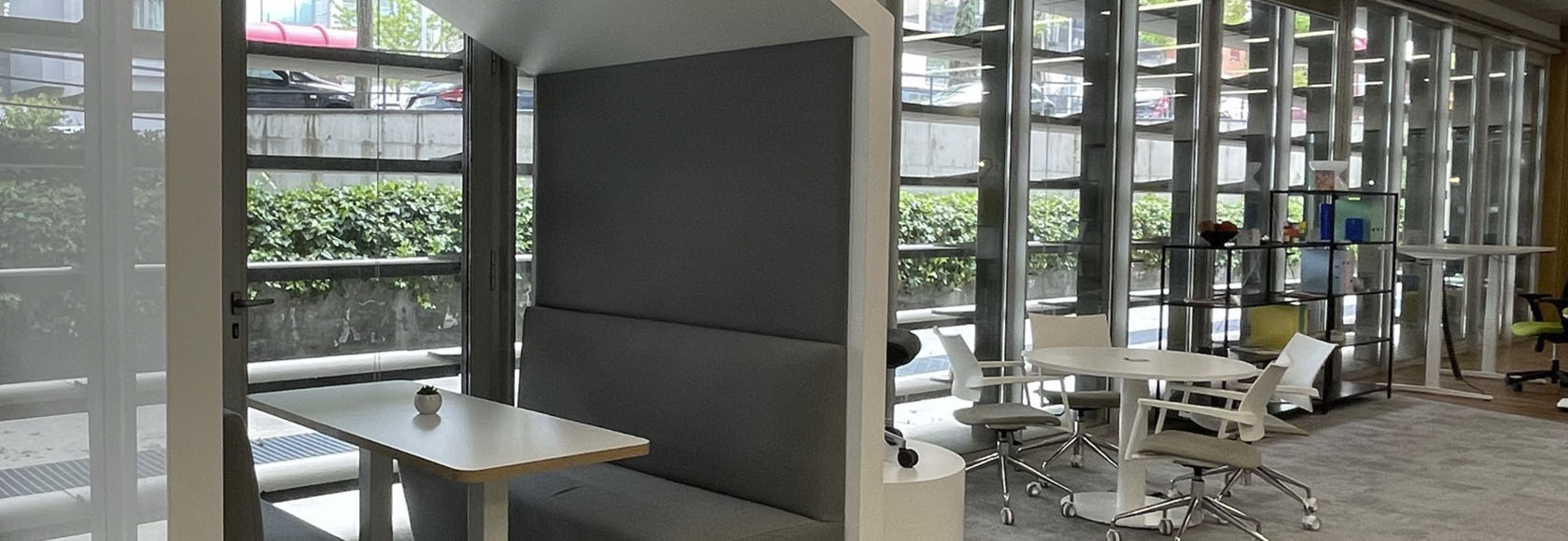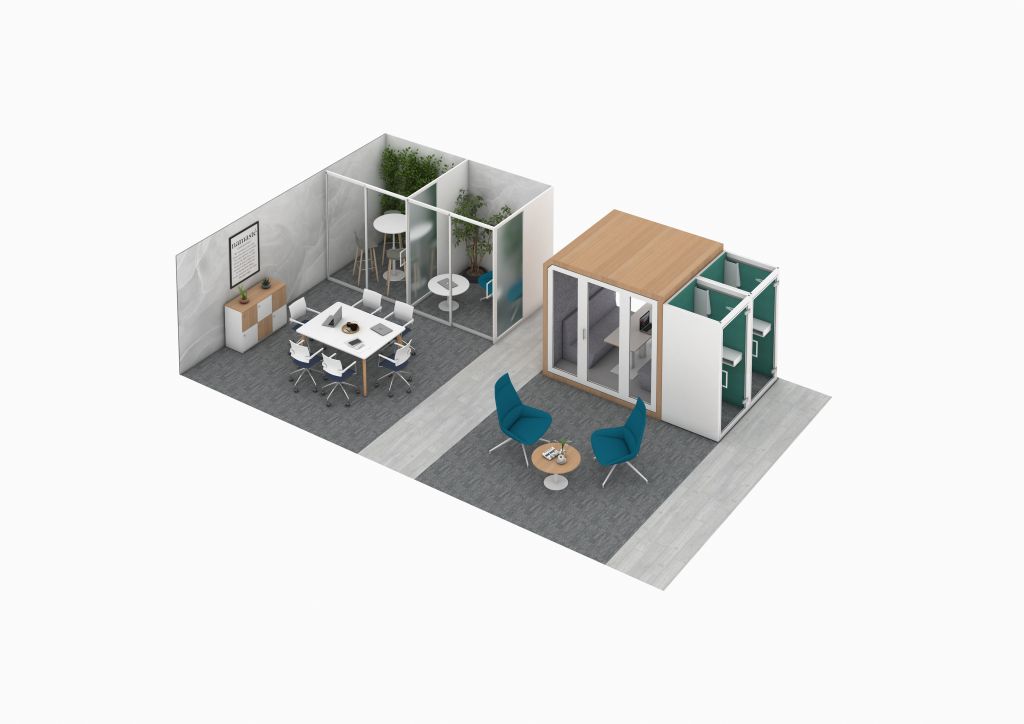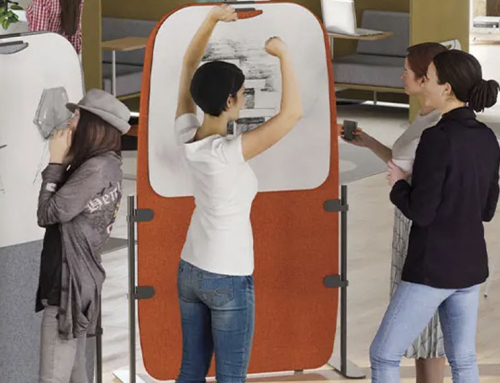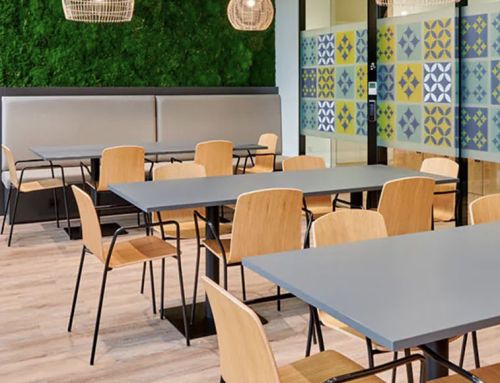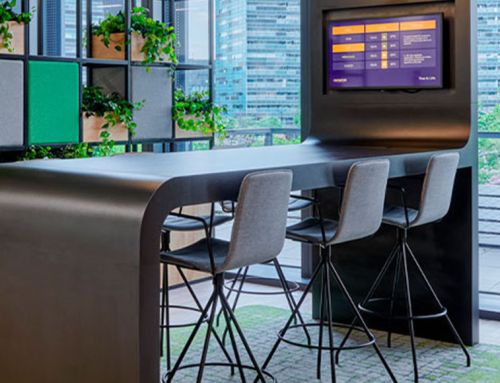Who said that working has to be exhausting and detrimental to our health? Occupational health is closely related to the work environment. Hence, the importance of having a healthy workspace, that is, one designed for the well-being of employees and the health of the planet. An office can be the cause of a person’s discomfort or, on the contrary, an important health and motivation factor. And we are not just referring to their ergonomic and environmental conditions. For example, if an office facilitates the flexible work and work-life balance that today’s employees demand, or if it fosters cohesion, or if it integrates nature into their daily lives, to give three examples, it generates emotional well-being.
A healthy workspace is not only about having a beautiful and modern office, but also about taking care of our physical, mental and social well-being. Different studies have revealed that inadequate design can cause stress, fatigue and even physical problems in workers. What a responsibility! From the arrangement of the furniture to the choice of colors, everything counts. Ergonomic design is essential to avoid injuries and muscle pain. In addition, good lighting and ventilation are essential to stay alert and productive, among other factors that we described in this previous post about what an ergonomic office is. Not to mention the sustainability factor. The choice of “green” processes and materials in office design and equipment undoubtedly has a very positive impact on the health of the workforce.
Corporate wellness efforts are most visible in work environments specifically designed to enhance wellness. And so, more and more companies are taking into account the impact of the workspace on employee well-being and the company’s bottom line. Indeed, improving employee well-being factors can improve company performance by more than 50%, according to various studies.
What does a healthy workspace look like?
What do offices that have been designed for the well-being of the workforce have in common? To begin with, a healthy workspace provides a range of different spaces for the different types of work that are carried out throughout the day. A mix of open and closed, individual and group, concentrated and collaborative, formal and informal spaces to offer people options and give them the opportunity to find the right areas to do their work at any given moment.
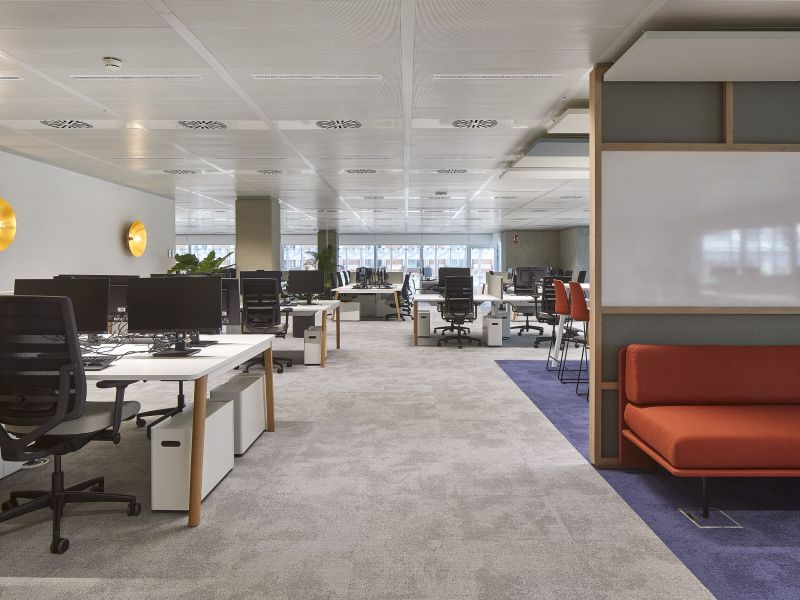
Cesce Offices – Ofita Furniture.
Well, a certification focused on users’ health and comfort
The concern of companies to have a healthy workspace is leading more and more companies to opt for the WELL Building Standard™ certification, the first certification focused exclusively on the health and comfort of users. It recognizes the relationship between buildings and their occupants by addressing seven key concepts related to human health in the environment: air, water, food, light, exercise, comfort and mind. Its function is to measure and monitor the performance of the construction systems to finally proceed to their certification.
The goal is for each feature to be evidence-based, verifiable and implementable, as well as disclosed for external input. Some characteristics are “preconditions”, i.e. mandatory to receive certification. Other features are considered as “optimizations”, which earn additional points of varying value. Sustainable and quality office furniture, such as Ofita’s, helps to obtain this certification for the building.
Ergonomic furniture, key to a healthy workspace
A healthy workspace can only be healthy if it is equipped with furniture and other elements that guarantee optimal health and safety conditions for its employees. Inadequate office furniture can be the cause of various occupational diseases. According to Ofita’s study “Ergonomics in the workplace”, 24% of office workers report the neck-shoulder area as the most affected, 19% the eyes, 15% the lower back, 9% the head and 7% the dorsal area. In fact, musculoskeletal disorders (MSDs) are one of the most common occupational disorders affecting millions of European workers in all sectors and cost billions of euros in lost productivity and increased health and social costs each year.
Ergonomics is the key to having a healthy office and avoiding those annoying backaches that haunt us all day long. No matter how much coffee you drink to keep your energy up, if your chair is not adjusted properly or your desk is at an uncomfortable height, you will find yourself spending more time in the physical therapy room than at your desk. But don’t worry, there is a solution! Ergonomics is in charge of adapting the work environment to the needs of the human body, seeking comfort and avoiding injuries. From ergonomic chairs with different adjustments, such as those from Ofita, to elevating tables, among many other examples, there are many options to improve posture and prevent those annoying aches and pains.
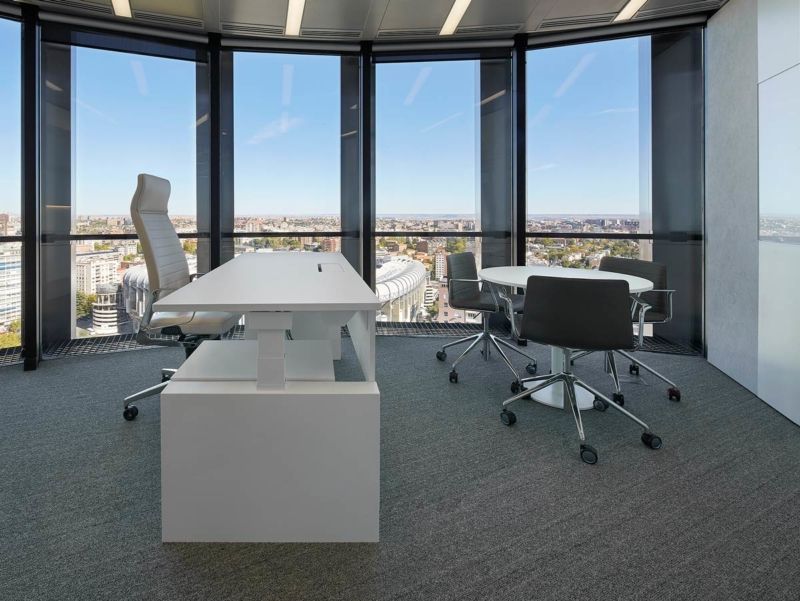
Ofita lift-up table in the Freshfields offices.
Acoustic comfort, the challenge of hybrid offices
Good acoustics is not only essential for the health of workers; it is also essential to support new work styles based on communication and teamwork, both face-to-face and remote. That’s why the design of a healthy workspace must strike a balance between collaboration and acoustic comfort. For this purpose, you should have quieter areas where employees can concentrate on individual tasks without distractions or hold a video call or meetings with some confidentiality. Thus, it is becoming increasingly common for offices to have small glass rooms and phone booths distributed throughout the different areas of corporate headquarters.
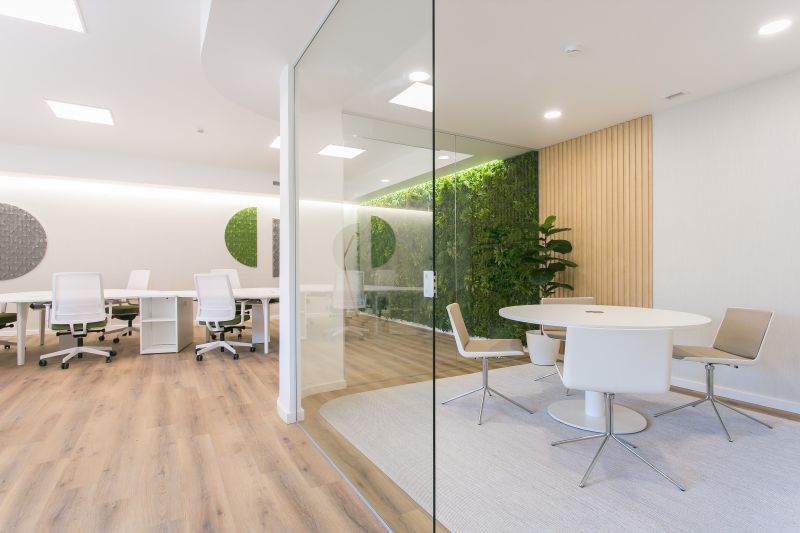
BIQ Offices – Ofita Furniture.
The selection of panels and furniture is a very important decision in the creation of an acoustically comfortable space, both in terms of materials – the more sound-absorbent the material, the greater the sound comfort – and in terms of layout. In this sense, furniture that incorporates insulating systems, such as Ofita’s MEET up! is very functional, perfect for achieving a certain acoustic and visual isolation also in more informal work environments.
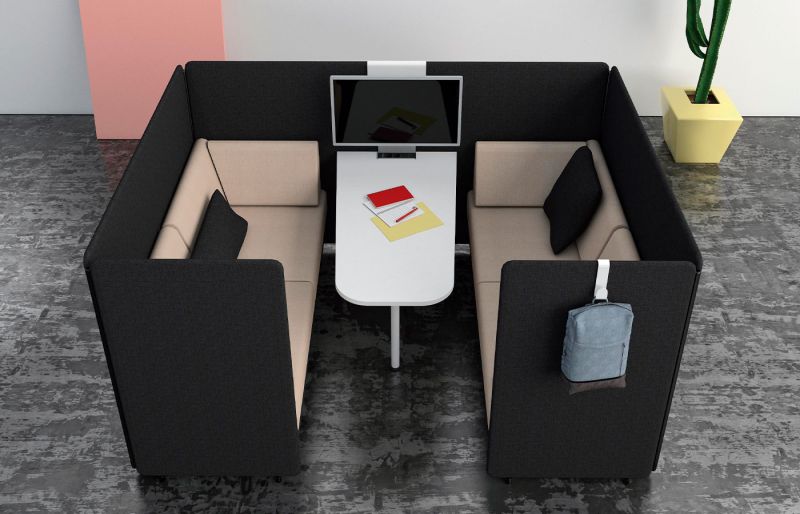
Meet UP!, by Ofita
Dividing screens are also widely used in different spaces, as they offer great functionality by eliminating part of the sounds around them and, at the same time, they generate differentiated areas with a minimum investment.
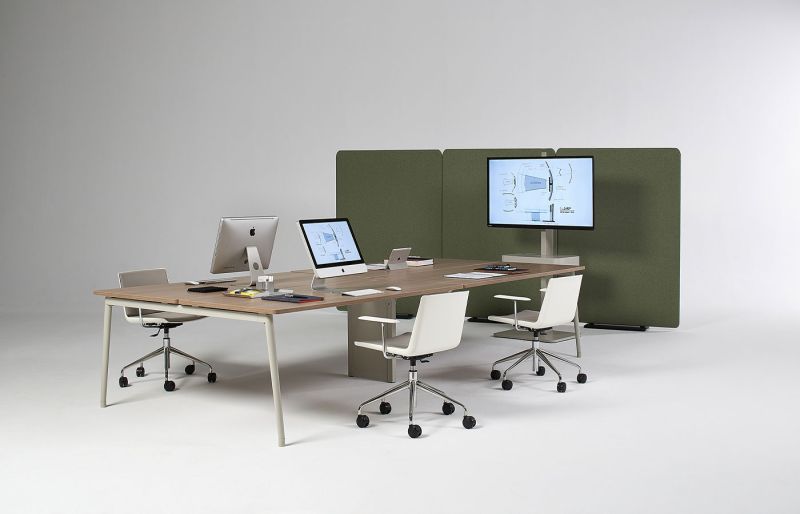
Ofita Flip folding screen.
Another element that is becoming more and more frequent in offices is soundproof office cabins. They create a specialized, controlled microenvironment that eliminates distractions (and can even be used as a phone booth), increases productivity and protects employees by eliminating bacteria and viruses in the air and on surfaces in a safe, continuous, effective and silent manner. In addition, as opposed to a partition wall, they are easy to assemble and disassemble.
The role of biophilic design in promoting well-being
Get back to nature in your office and improve your well-being! Biophilia is a key to creating a healthy and revitalizing work environment. This trend, which seeks to incorporate natural elements into the design of interior spaces, has proven to have numerous health benefits for workers. Studies have found that the presence of plants in the workplace can reduce stress, improve productivity and increase job satisfaction. In addition, the introduction of natural light and views of the outdoors also plays a key role in promoting wellness. So now you know, if you want to feel more connected to nature and enjoy a healthier work environment, integrate biophilic design into your office!
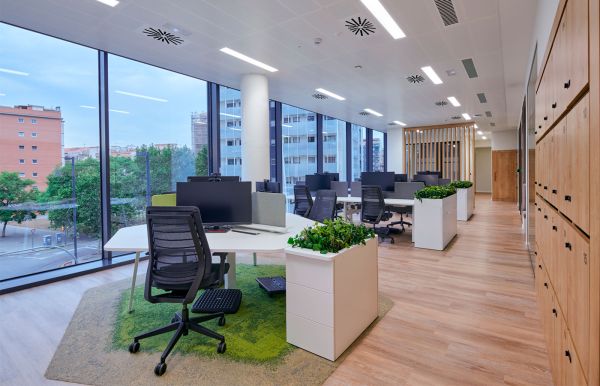
Olympus Offices – Ofita Furniture.
And don’t forget the other elements we’ve talked about that are essential for a healthy workspace, from office furniture to proper lighting.
